Reciprocal Shades
Reciprocal Shades: A computational workflow for knowledgebased design and fabrication of multi-performance reciprocal Systems
Omid OLIYAN TORGHABEHI
*Taubman College of Architecture, University of Michigan Ann Arbor, Michigan, United States
This research paper presents a novel computational workflow for design, analysis and fabrication of multi-performance reciprocal systems with planar elements.
The proposed method integrates dynamic form-finding process, structural analysis and digital fabrication of non-conventional reciprocal systems.
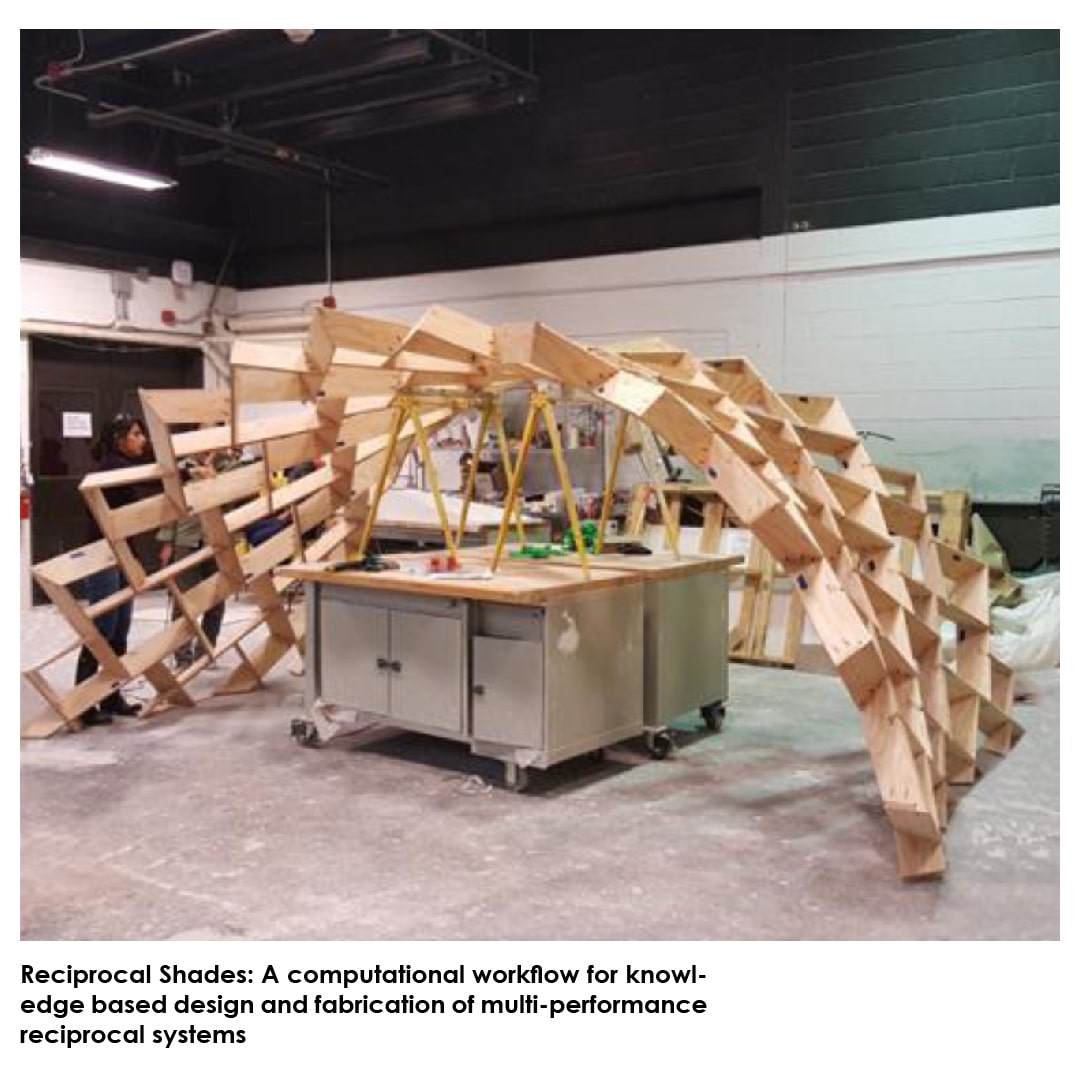 Using a multi-step feedback system, simulation feedback and fabrication requirements are integrated in the design process to ensure the performance requirements and constructability of design solutions.
Using a multi-step feedback system, simulation feedback and fabrication requirements are integrated in the design process to ensure the performance requirements and constructability of design solutions.
As an integrative design process this workflow extends the state of the art in the following ways. A novel mesh-based pattern generation formulation is implemented for design and patterning of freeform reciprocal systems.
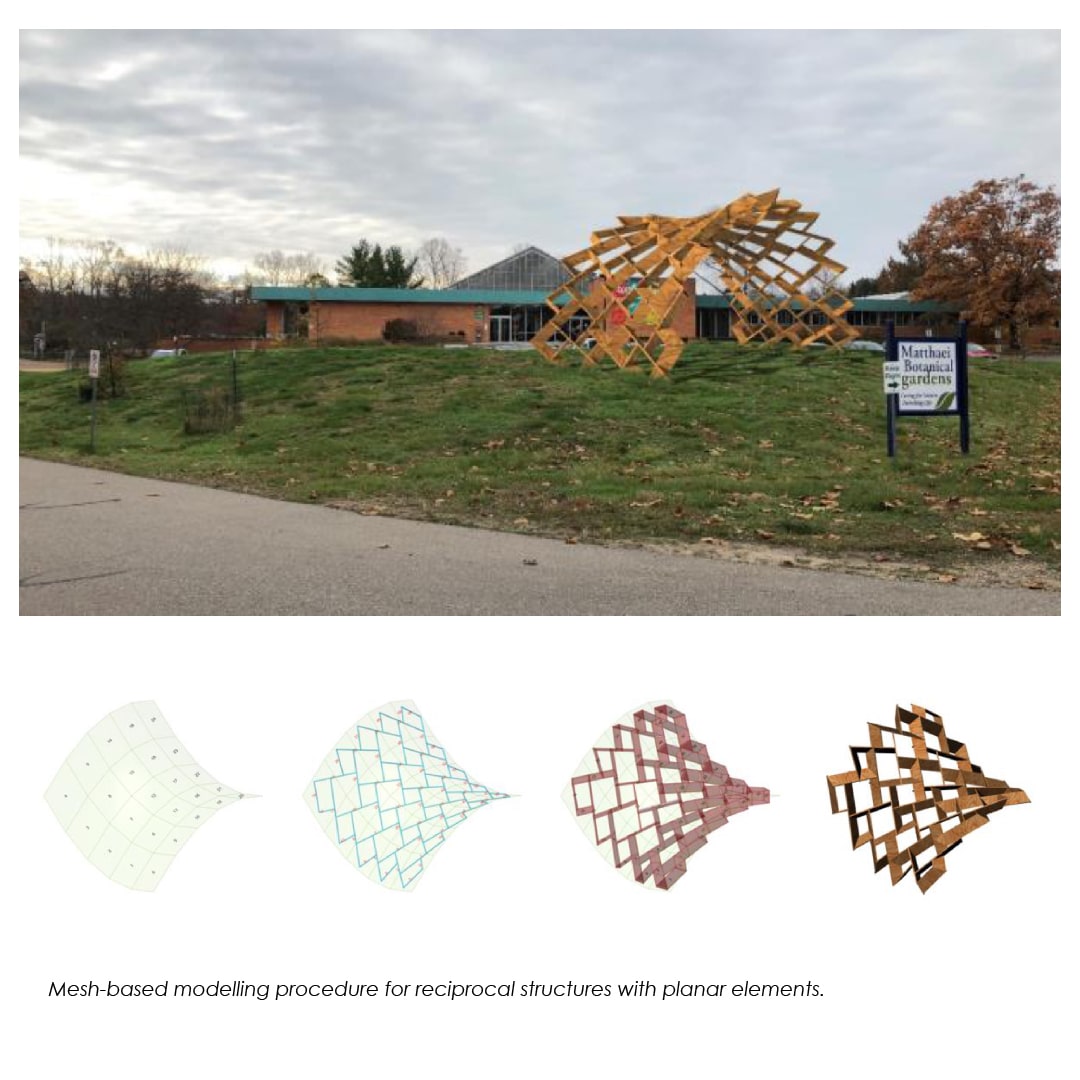 A dynamic form finding process optimizes the reciprocal patterns to accommodate for geometric constraints of planar members. A simplified formulation for structural analysis and design is used for interactive analysis of the structure.
A dynamic form finding process optimizes the reciprocal patterns to accommodate for geometric constraints of planar members. A simplified formulation for structural analysis and design is used for interactive analysis of the structure.
Through a series of physical testing and computational simulations a minimal connection detailing is designed to reduce connection complexity and also facilitate assembly process.
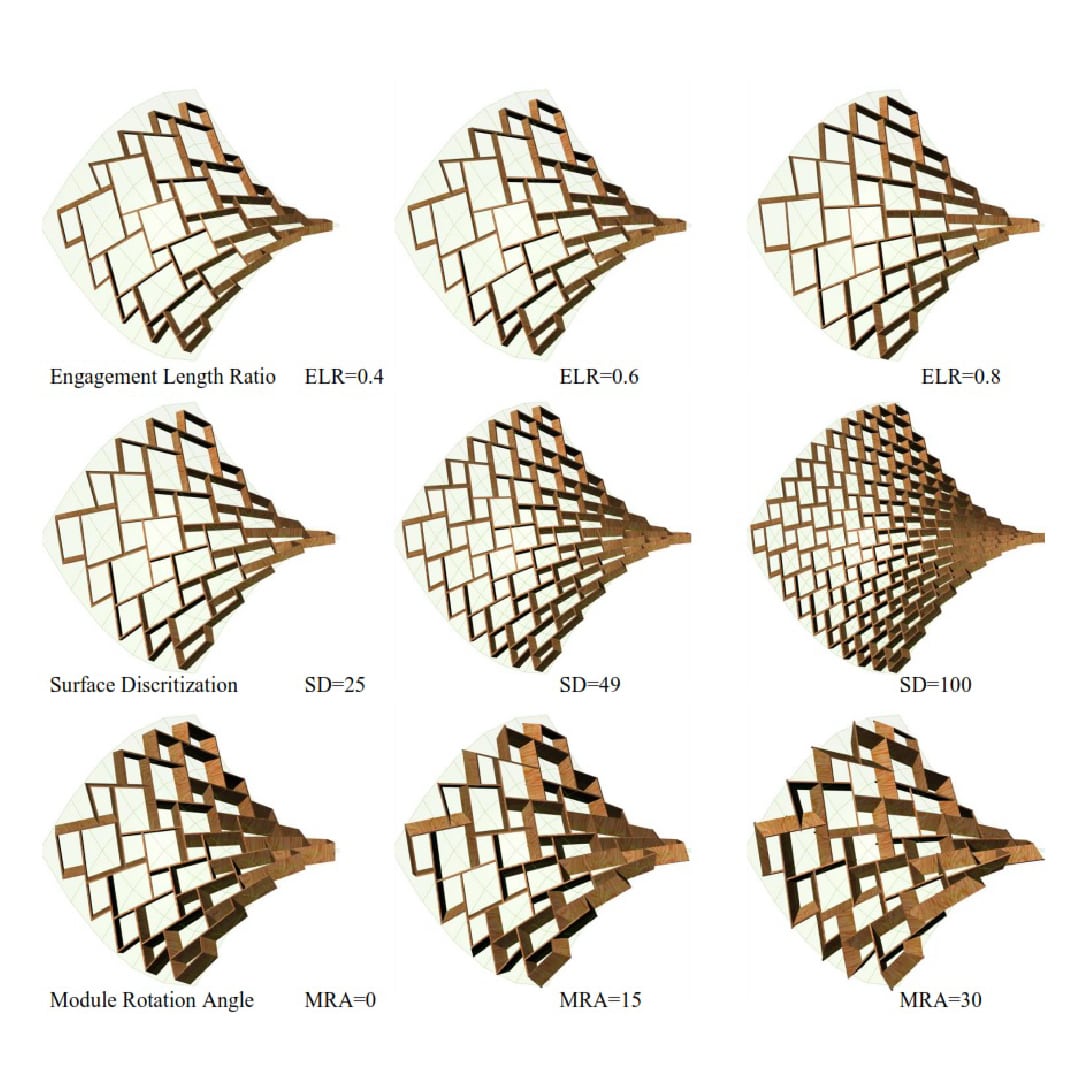 The proposed workflow is tested through a full-scale prototype fabrication in form of a public installation to be located in Matthaei Botanical Gardens in Ann Arbor, Michigan.
The proposed workflow is tested through a full-scale prototype fabrication in form of a public installation to be located in Matthaei Botanical Gardens in Ann Arbor, Michigan.
This research is a basis for design and fabrication of innovative lightweight reciprocal systems made of sustainable materials for applications in building façade systems.
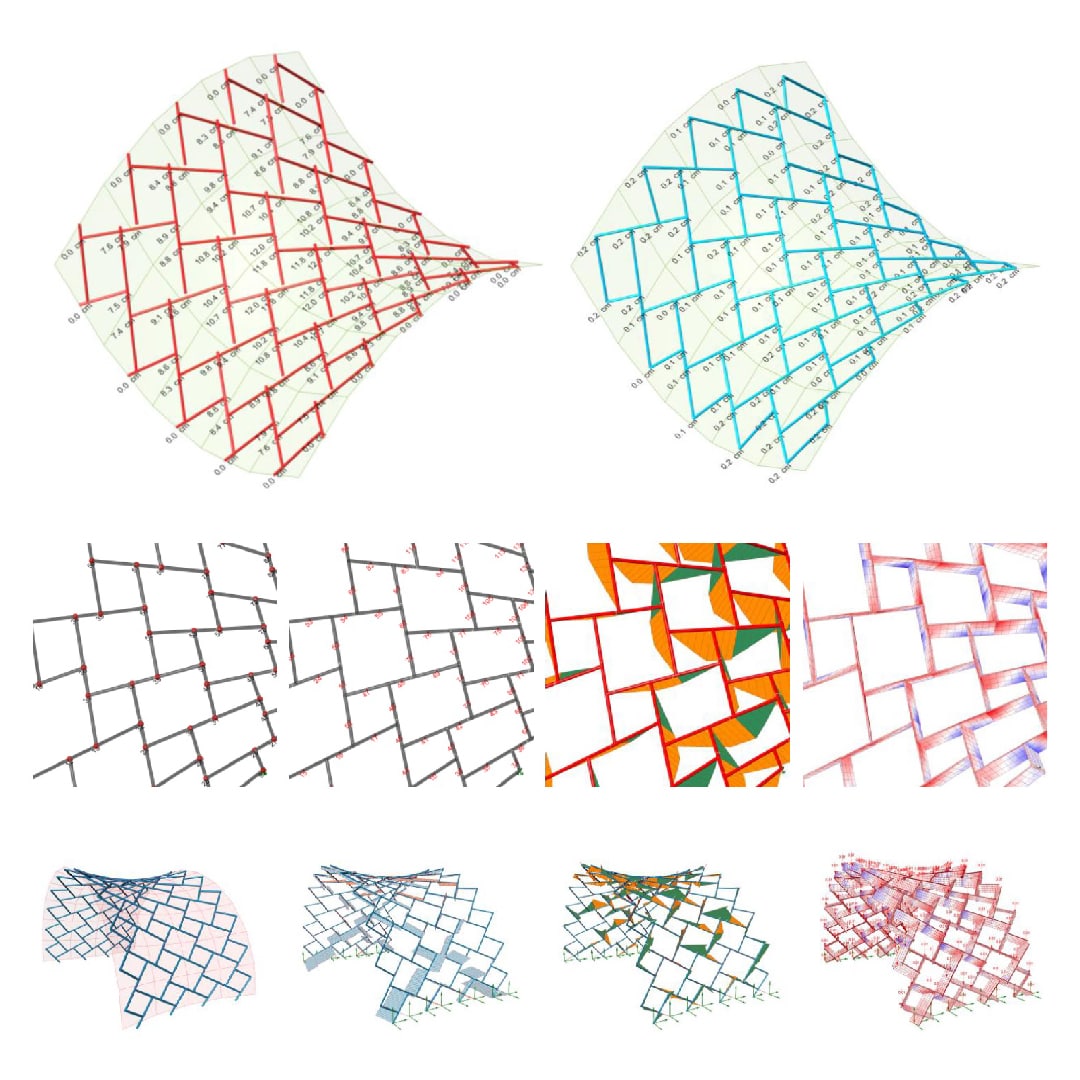 This construction method was adopted in the west and developed to flat configurations like the reciprocal patterns in drawings of Leonard da Vinci or aligned axis grillage floor system by Sebatiano Serlio or notched elements designed by John Wallis.
This construction method was adopted in the west and developed to flat configurations like the reciprocal patterns in drawings of Leonard da Vinci or aligned axis grillage floor system by Sebatiano Serlio or notched elements designed by John Wallis.
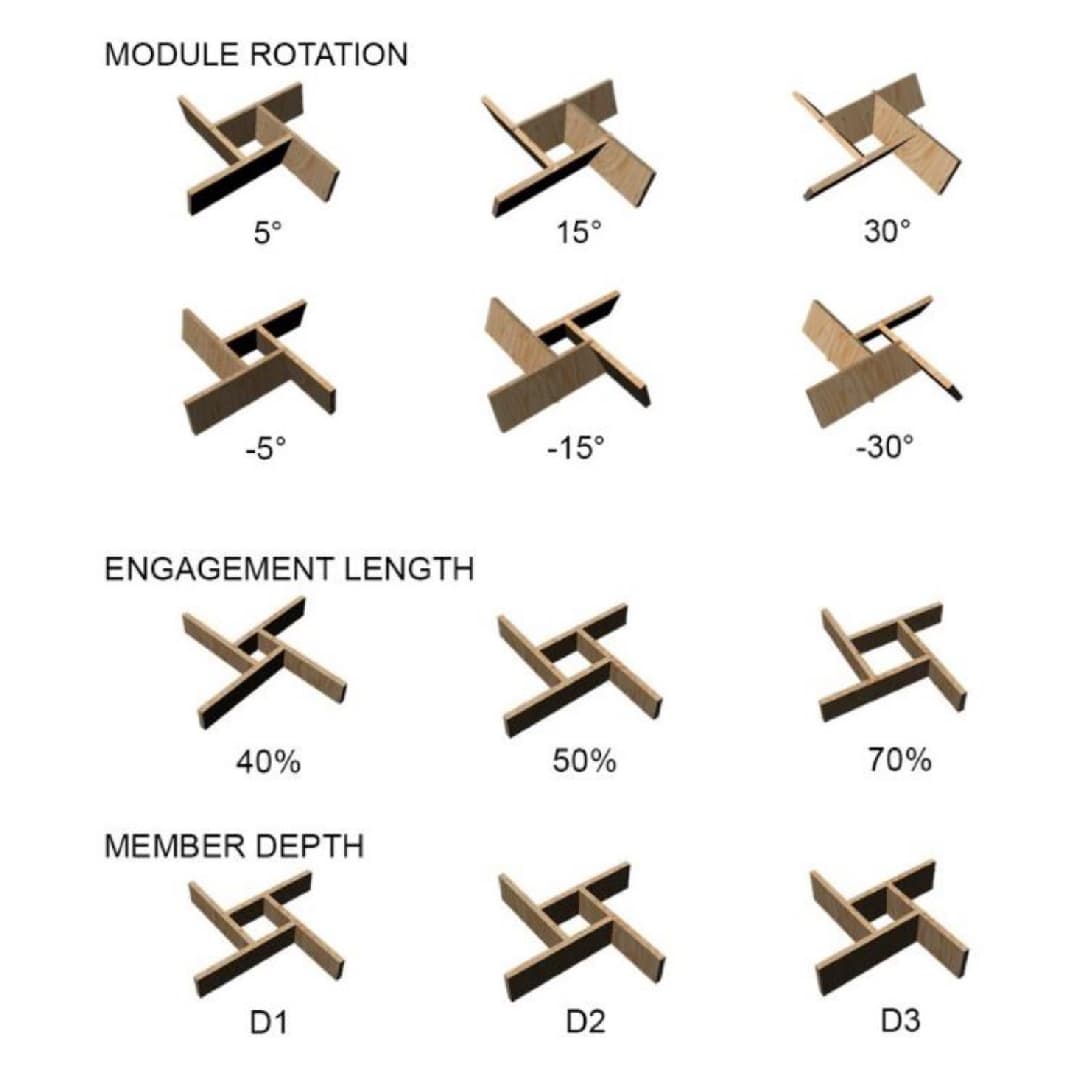 The grillage mechanism in the reciprocal systems comes from mutually supporting members forming closed circuits (called reciprocal modules) comprised of more than three members. Each member is also part of the adjacent circuit on its other end.
The grillage mechanism in the reciprocal systems comes from mutually supporting members forming closed circuits (called reciprocal modules) comprised of more than three members. Each member is also part of the adjacent circuit on its other end.
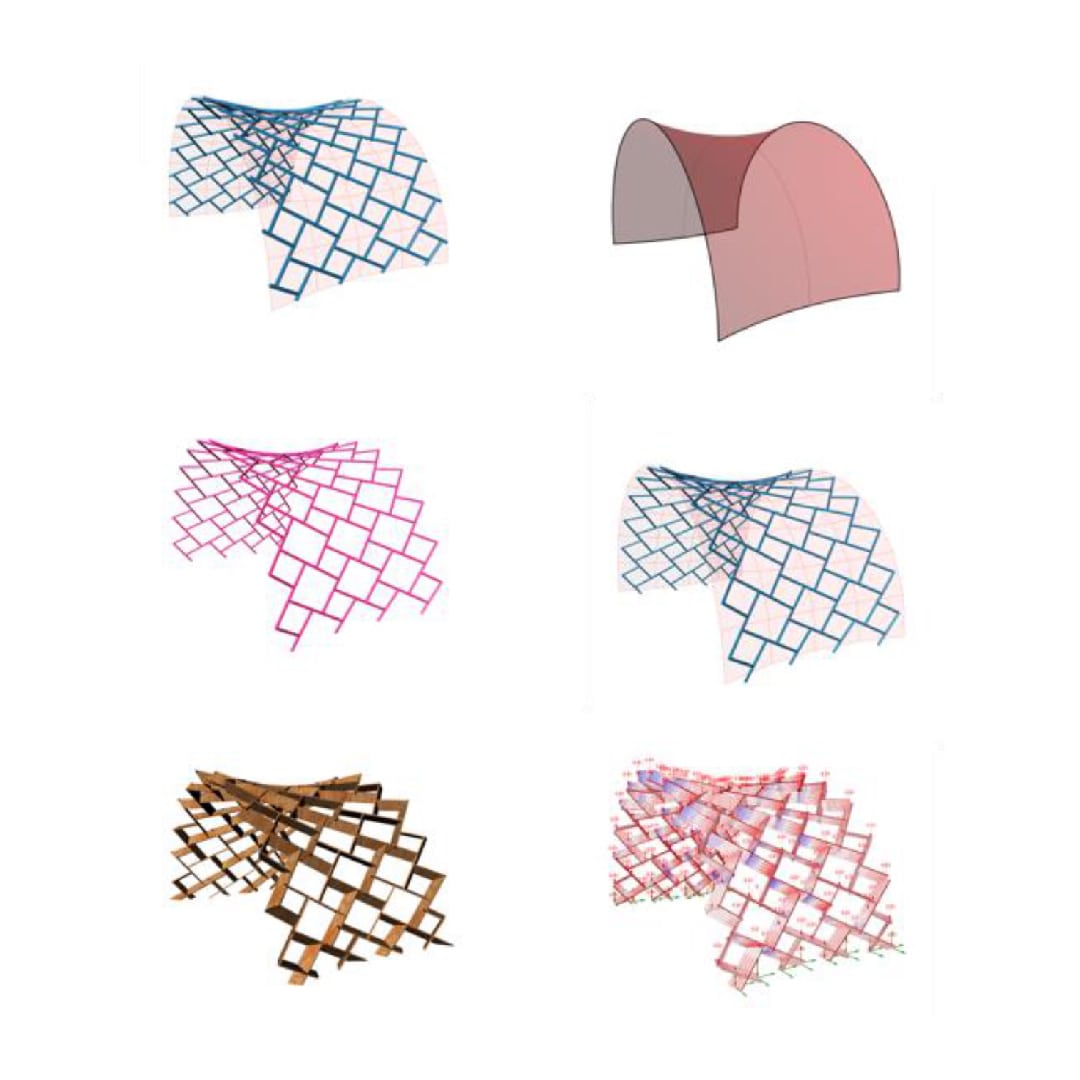 The reciprocal systems encompass huge variety of structural forms depending on number of modules, number of members in reciprocal modules, regularity or irregularity of reciprocal modules, planarity or non-planarity, and single or varying curvature of the global geometry.
The reciprocal systems encompass huge variety of structural forms depending on number of modules, number of members in reciprocal modules, regularity or irregularity of reciprocal modules, planarity or non-planarity, and single or varying curvature of the global geometry.
However, the governing concept and behavior of these systems are the same. In this research we show how a unified computational model is developed to geometrically model comprehensive variations of reciprocal forms.




























Comments